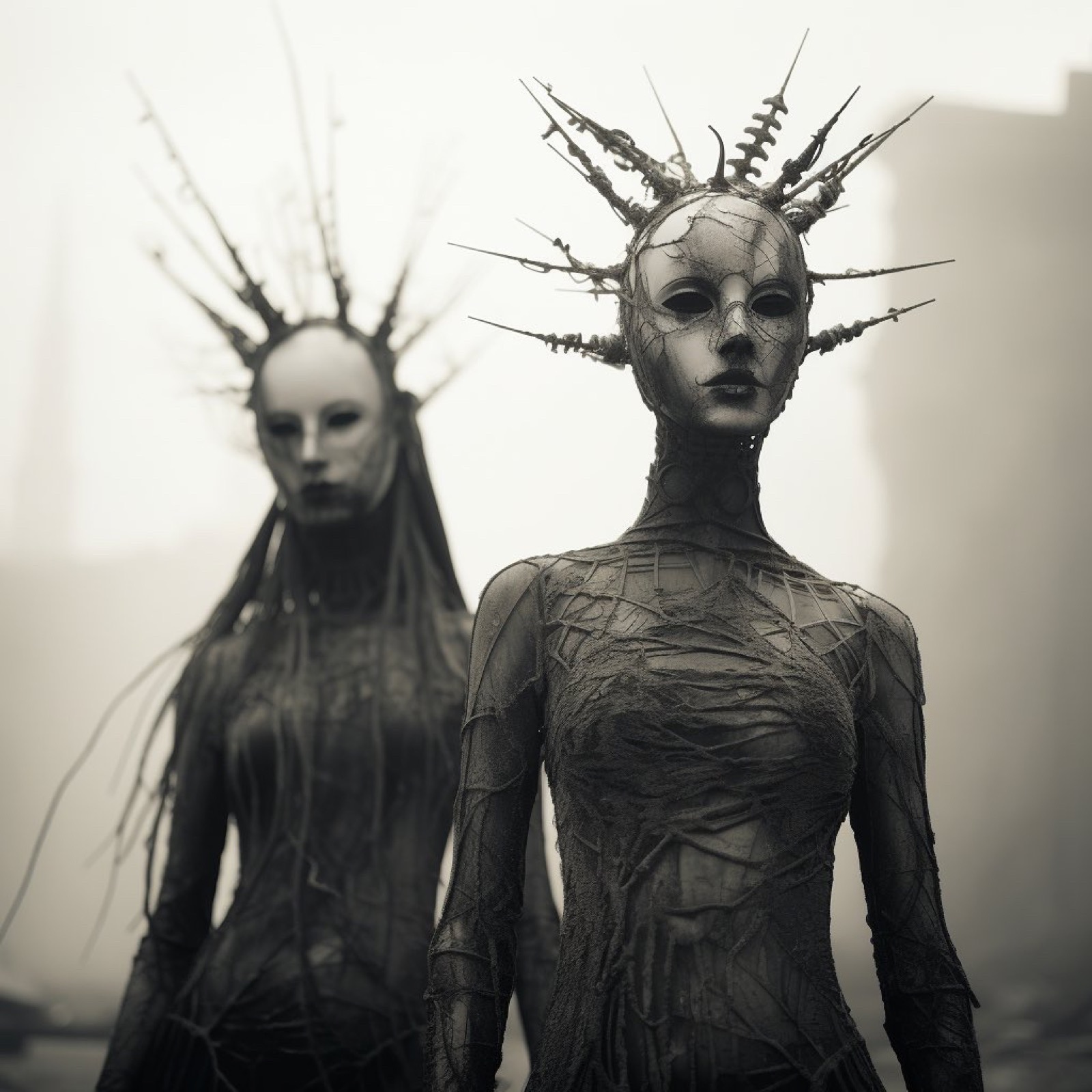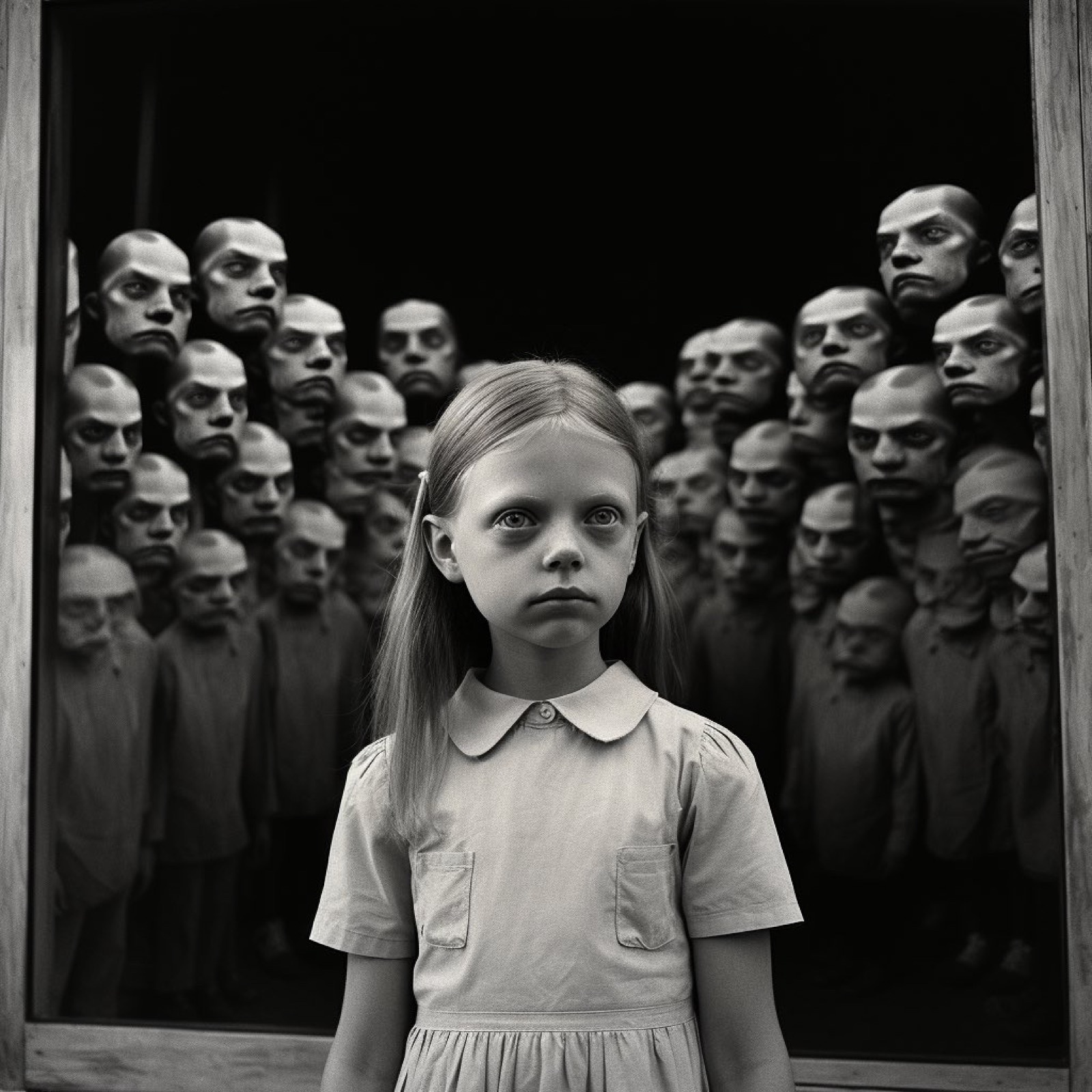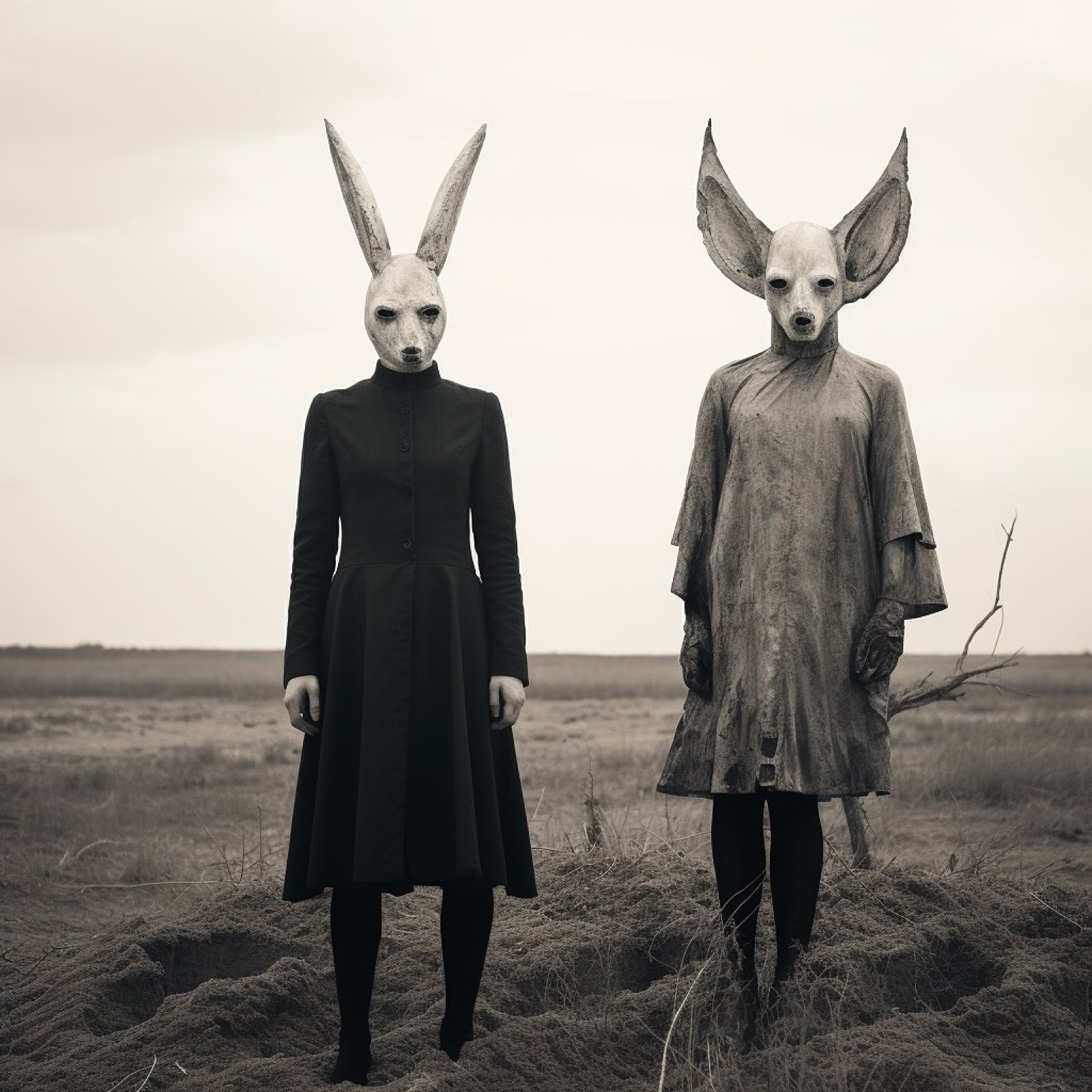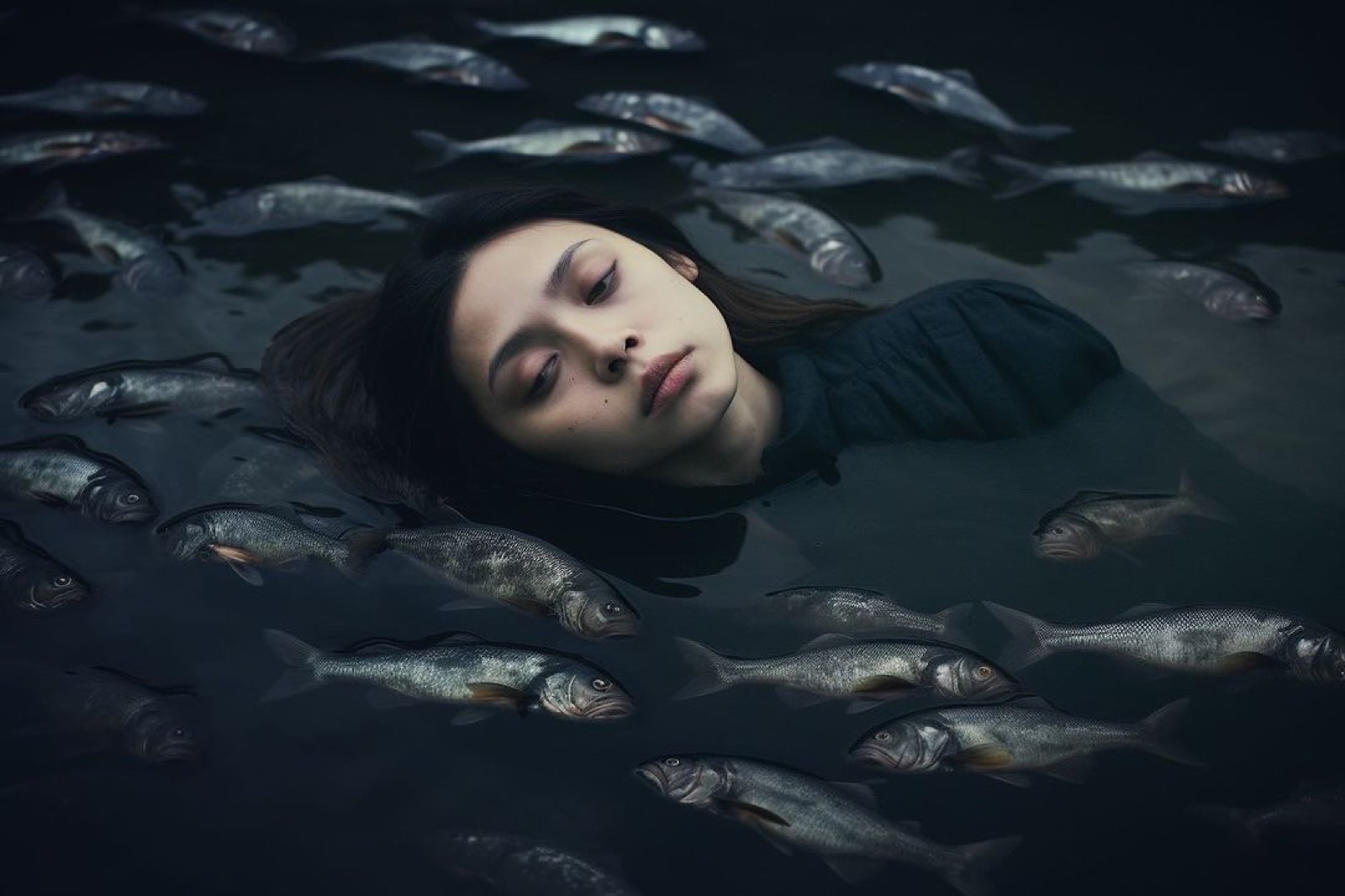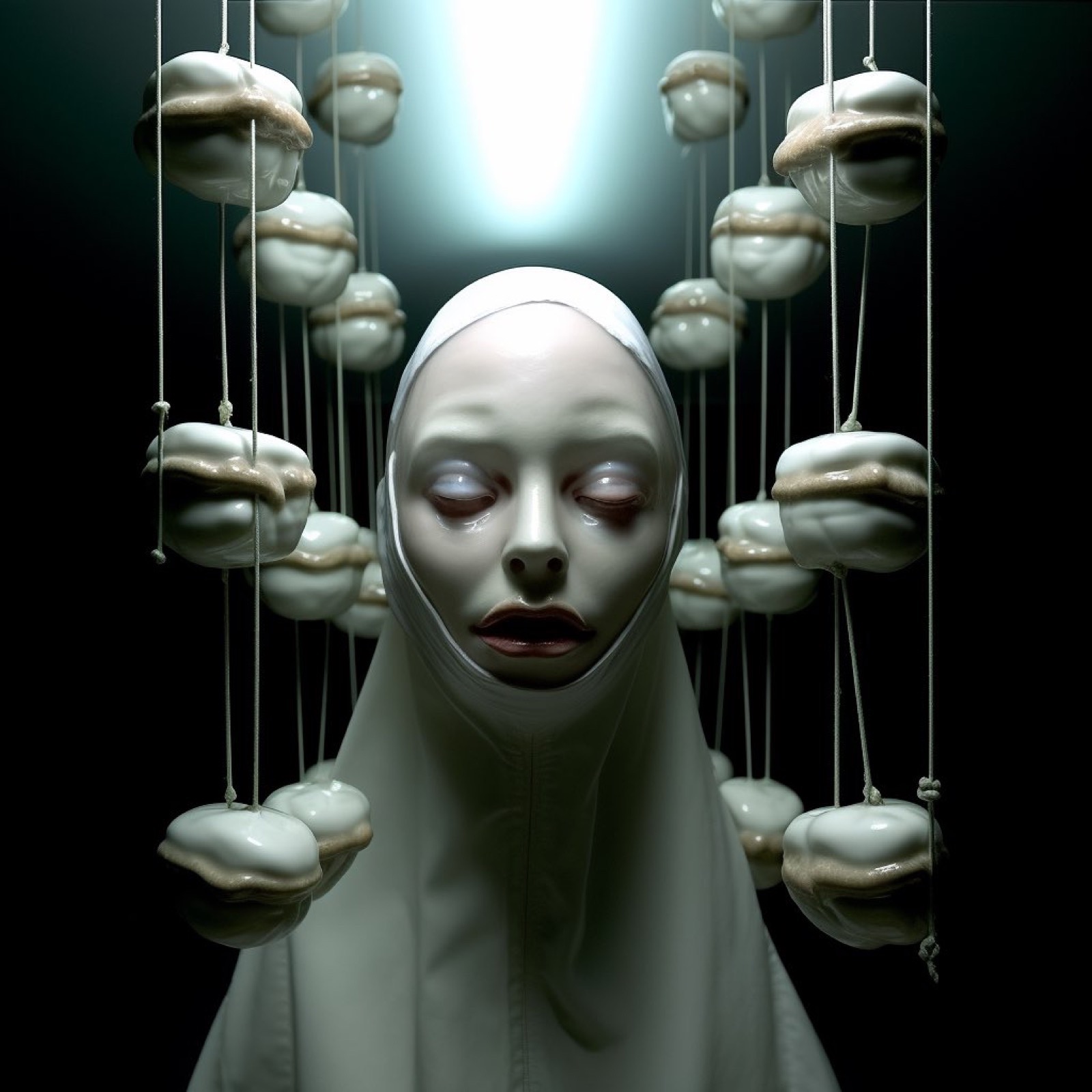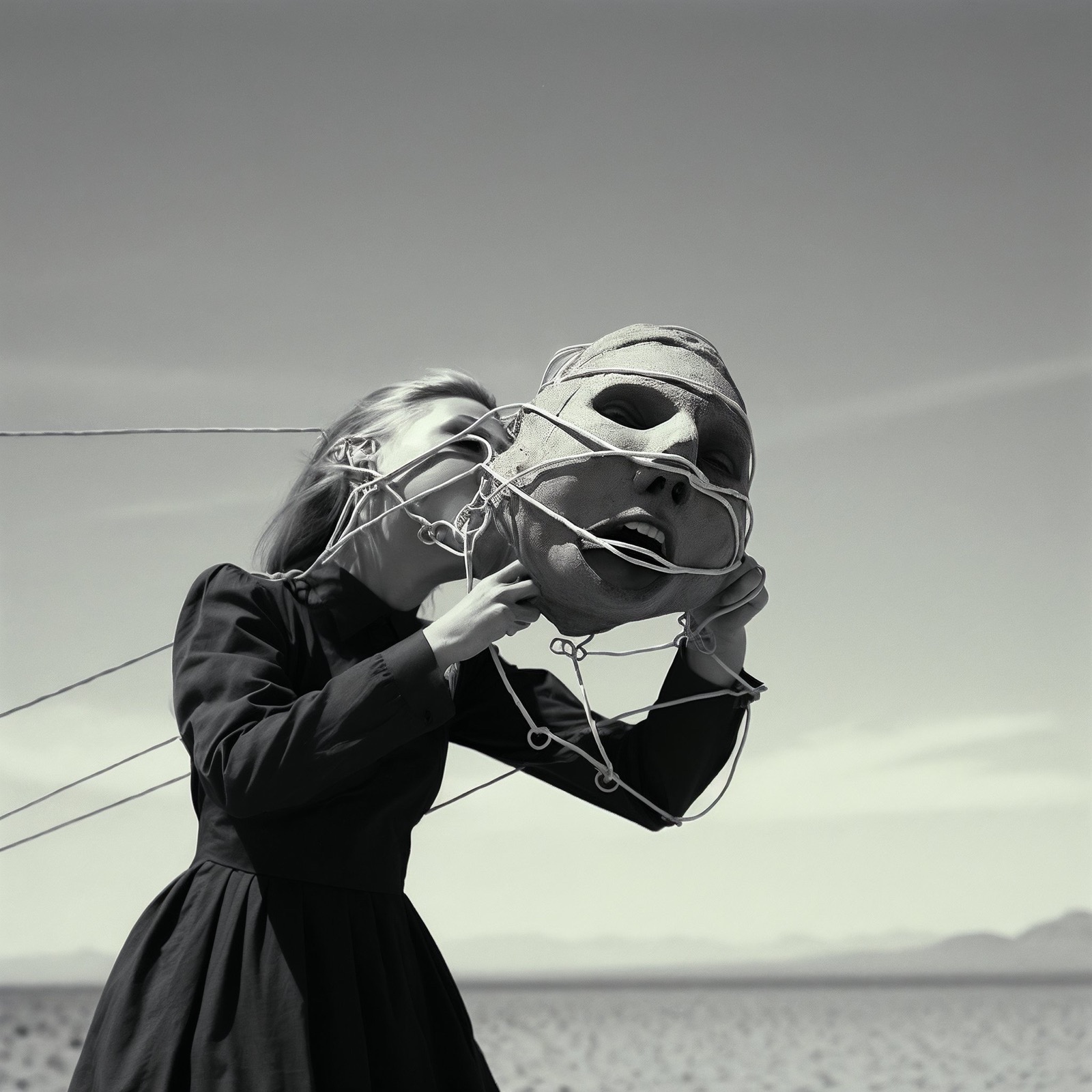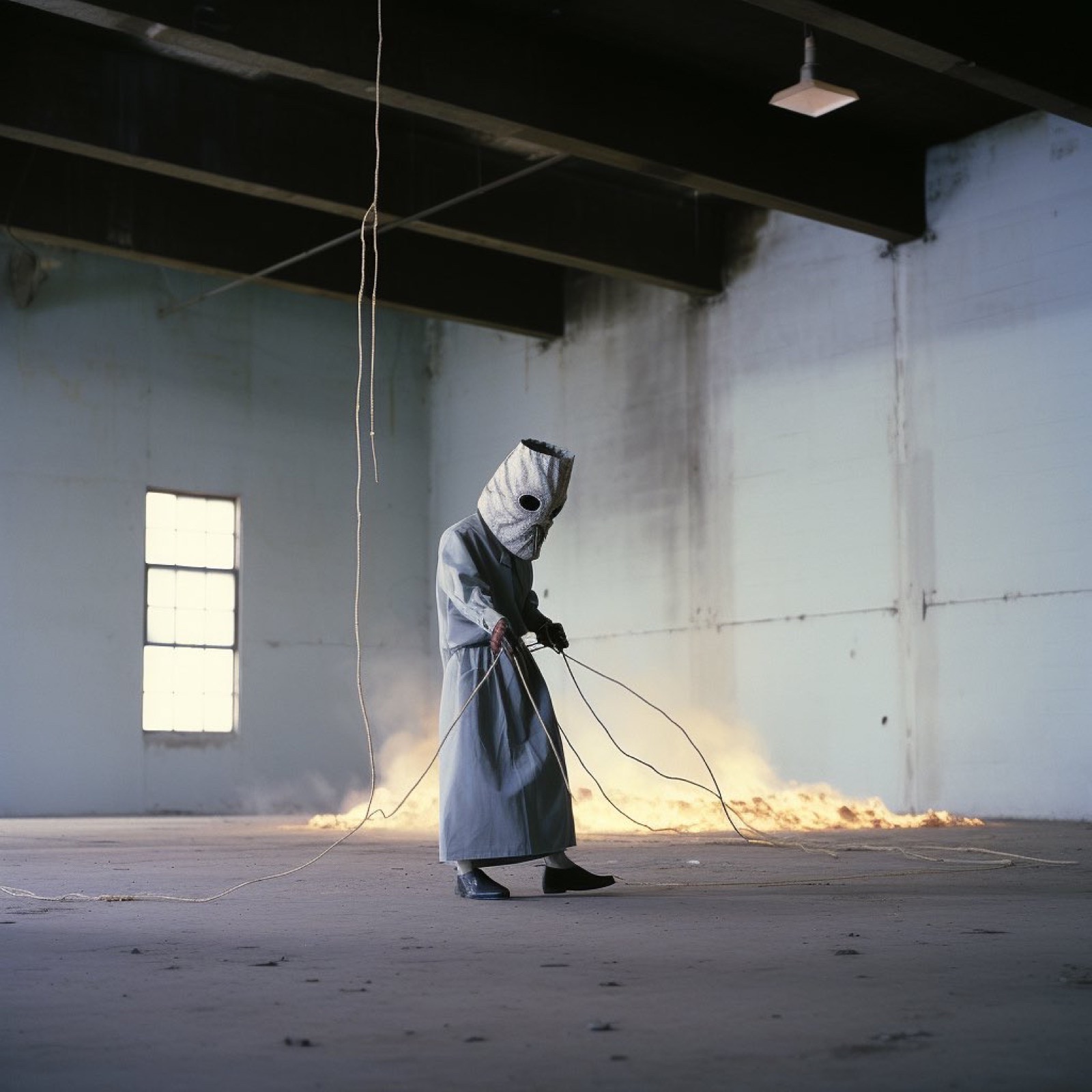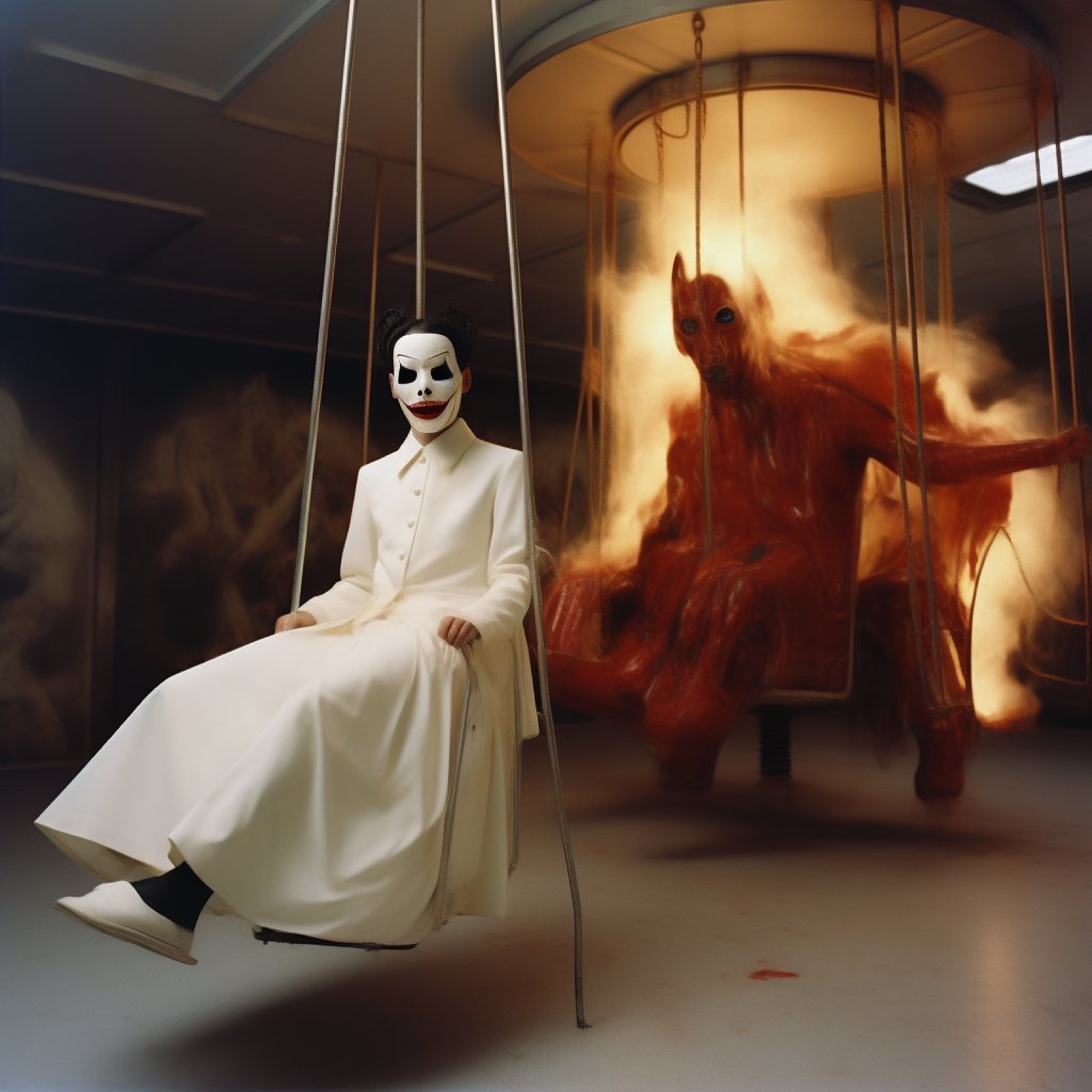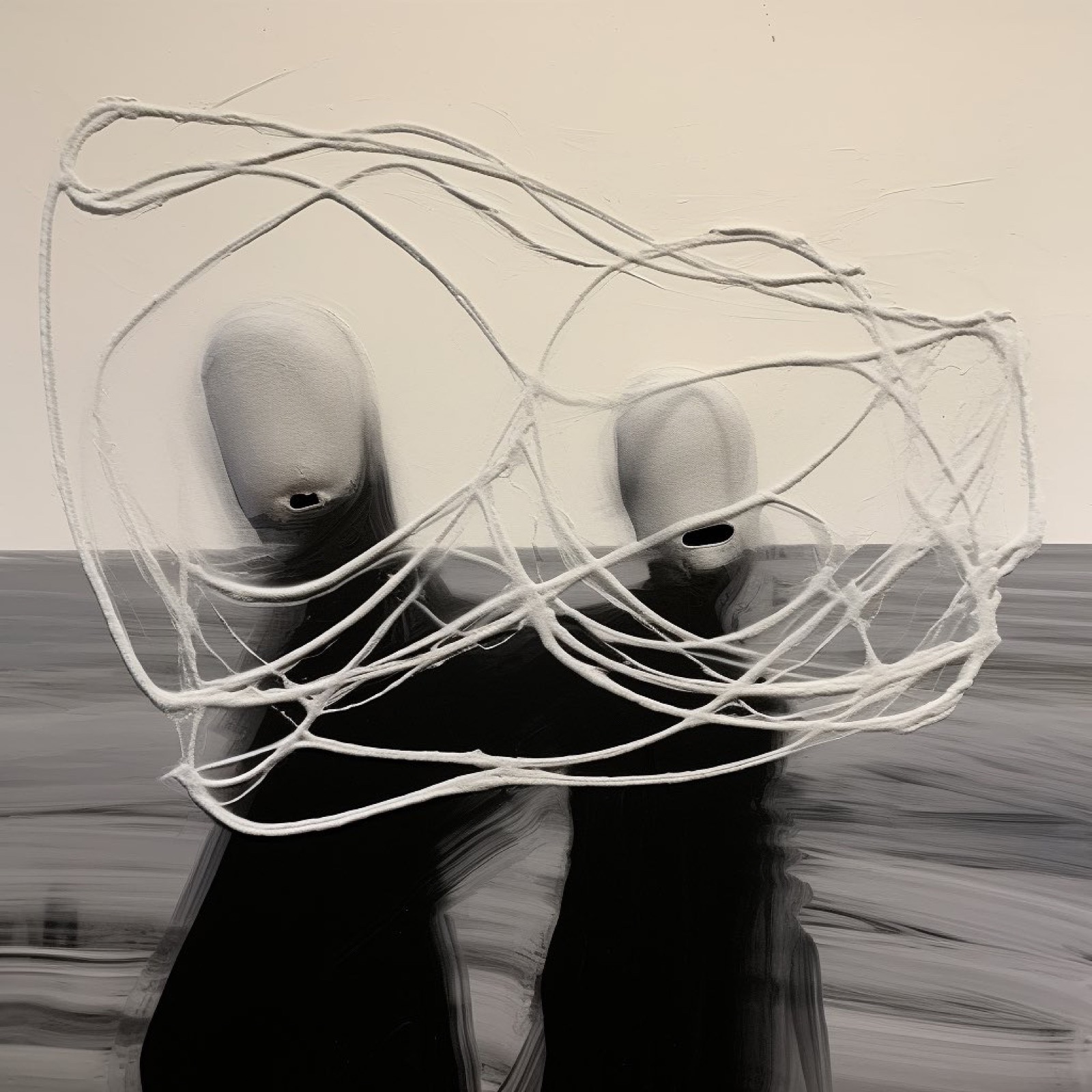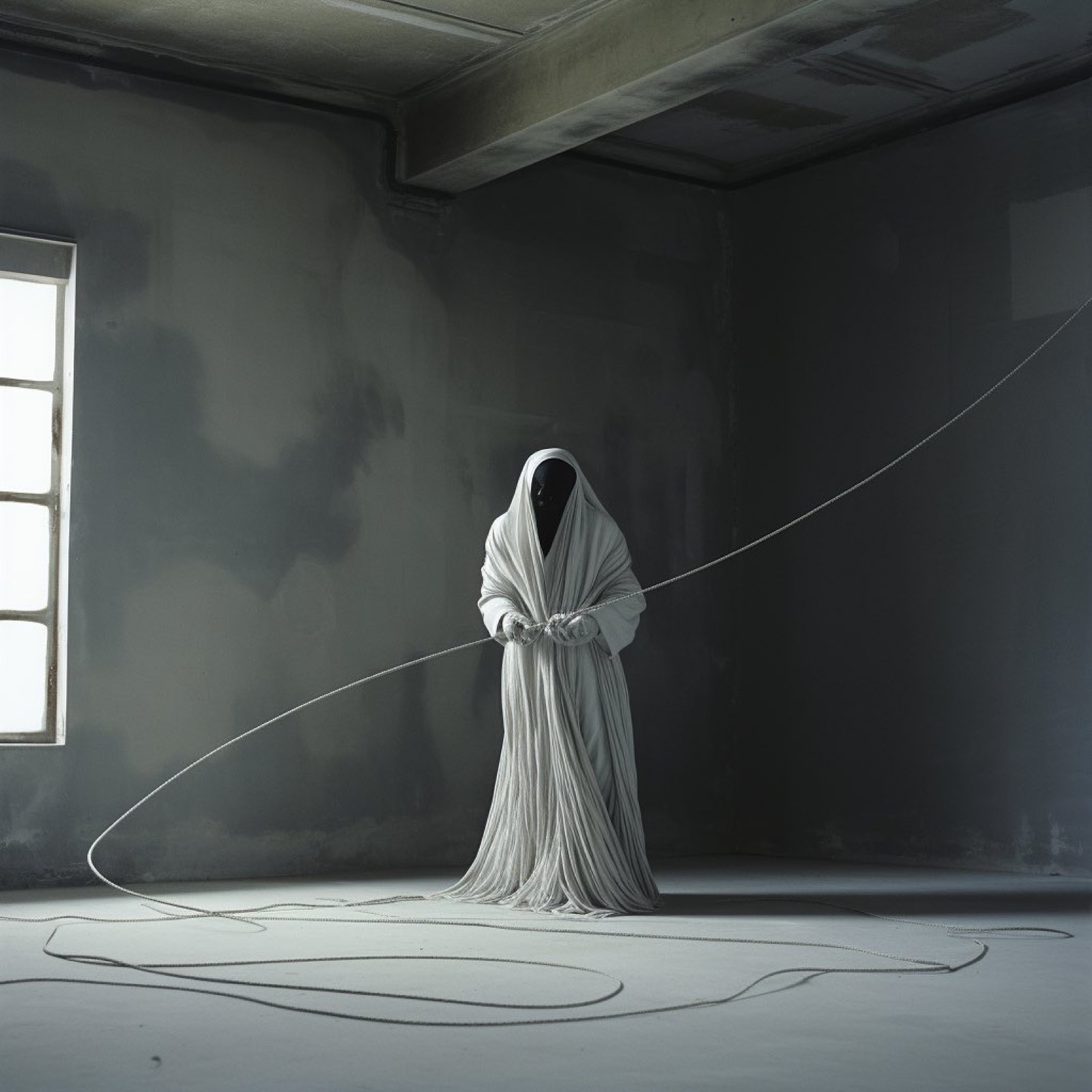Delving into the psycho-oniric theme, the soul of your works, what is your relationship with it? Is there a research background or does the first source of inspiration come from personal analysis? Tell us about your dreams, how they are reflected in your art, and to what extent the creative flow, both day and night, is spontaneous or controlled.
I did create an extensive series around the different phenomenological states of sleep, such as lucid dreaming, sleep paralysis, insomnia and false awakening. What all of these states have in common is that you are on the precipice of being awake and asleep. A multitude of interesting things happen within these mental states that I wanted to explore. The way AI sifts through troves of data reminds me of how brains process our memories during sleep. It means that AI as a tool is inherently dream-like, which makes it a perfect medium to explore the nature of consciousness.
What sensations or states do you wish to evoke in people and what do you yourself want to perceive when observing a work of art? Which emotions, in your opinion, signal a successful creative outcome?
I think art is incredibly personal so what resonates with me might not resonate for the next person. My favourite kind of art is art that makes me feel and think. I also think art is contextual insofar that it has significance based on its particular instantiation to a particular moment in history and what came before it. I think the best kind of art is the art that breaks boundaries in some way for its time. If you look at all the movements in art history they were artists who were the pioneers of the time – experimenting and often creating work that shocked in some way for the time. We are all standing on the shoulders of giants in that regard.
 https://www.nastymagazine.com/wp-content/uploads/2023/09/PHOTO-2023-01-05-04-03-27.jpeg
1066
1600
Editor Nasty
https://www.nastymagazine.com/wp-content/uploads/2015/02/new-logo-basker-WHITE4.png
Editor Nasty2023-09-26 18:59:202023-10-20 19:34:13Krissie Marie Heliodore / Anticlone Takeover
https://www.nastymagazine.com/wp-content/uploads/2023/09/PHOTO-2023-01-05-04-03-27.jpeg
1066
1600
Editor Nasty
https://www.nastymagazine.com/wp-content/uploads/2015/02/new-logo-basker-WHITE4.png
Editor Nasty2023-09-26 18:59:202023-10-20 19:34:13Krissie Marie Heliodore / Anticlone Takeover
